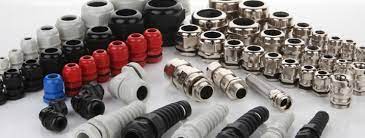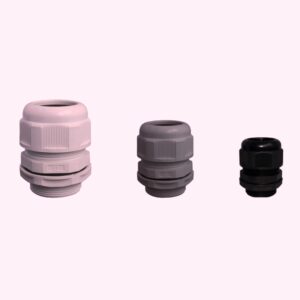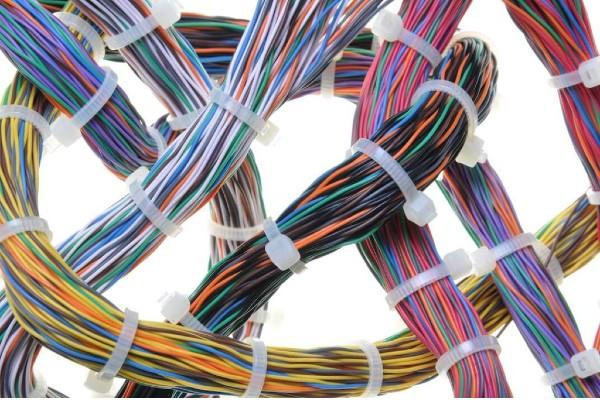
Nylon cable glands are designed to permit, the access of cable wires into the electrical components and equipment that helps to provide benefits with earthing, grounding, insulation, sealing, bonding, retention, and stain relief, along with providing mechanical cables support.
Nylon cable glands are often placed in harsh and hazardous surroundings, where they need to contain electrical sparks of flames or might require to resist outside contamination like dirt, fluid, or wastewater and dust. They also provide advantages in preventing the cables from twisting in order to ensure utmost security in connectivity along with stating the continual performance.
What are the Uses or Applications of Nylon Cable Glands?
There are numerous applications or uses of Nylon cable glands as follows:
-
=> Nylon cable glands are used for general wiring, electrical power, industrial, and control panel applications
-
=> They provide mechanical retention or maintenance for cable
-
=> They are used with unarmored and curtained or screened flexible cables
-
=> Nylon cable glands are suitable for unification with equipment and apparatus which has an increased safety terminal chamber
-
=> Nylon cable glands can also be used for the safety of flammability
-
=> They can also be used in the high vibration environment
These are the various uses or applications of Nylon cable glands, offered by JIGO a premier company in the manufacturing of Nylon cable glands.
You May Like: All About Plastic Cable Glands
Types and Specifications of Nylon Cable Gland
There are three kinds of categories of Nylon cable gland offered by JIGO to their customers as follow:
1.PG Thread Cable Glands: https://jigoindia.com/product/pg-thread-calbe-glands/

- => Model Thread range – PG7 to PG63
- => Cable Range – 3 to 50
- => GL Range (mm) – 8 to 29
- => H Range (mm) – 21 to 95
- => Spanner size Range [A&E] (mm) – 15 to 75
- => Material – Nylon (PA)
- => Sealing Element – NBR
- => Protection Level – IP68
- => Ambient Temperature –
Static -40 degree C to -100 degree C,
Short 120 degree C Dynamic -20 degree C to -80 degree C,
Short 120 degree C - => Colour – White, Grey, Black
2. M Thread Cable Glands: https://jigoindia.com/product/m-thread-cable-glands/

- => Model Thread range – M 12*1.5 to M 63*1.5
- => Cable Range – 3 to 44
- => GL Range (mm) – 8 to 20
- => H Range (mm) – 21 to 47
- => Spanner size Range [A&E] (mm) – 15 to 68
- => Material – Nylon (PA)
- => Sealing Element – NBR
- => Protection Level – IP68
- => Ambient Temperature –
Static -40 degree C to -100 degree C,
Short 120 degree C Dynamic -20 degree C to -80 degree C,
Short 120 degree C - => Colour – White, Grey, Black
3. MG Thread Cable Glands: https://jigoindia.com/product/mg-thread-cable-glands/

- => Model Thread range – MG 20*1.5 to MG 32*1.5
- => Cable Range – 14 – 8.5 to 25 – 18
- => GL Range (mm) – 15 to 20
- => Spanner size Range [A&E] (mm) – can range accordingly to the model numbers
- => Material – Nylon (PA66) fire rating UL94V – 2
- => Sealing Element – NBR
- => Protection Level – IP68
- => Ambient Temperature –
Static -40 degree C to -100 degree C,
Short 120 degree C Dynamic -20 degree C to -80 degree C,
Short 120 degree C
- => Colour – White, Grey, Black
- => Thread specification – Metric Teeth
Conclusion
We at JIGO the leading manufacturer of nylon cable glands, offer you various applications of using Nylon Cable Glands along with our trust, responsibility, innovative textures, and sustainability and support facilities, which makes us the most valued brand in the business.

